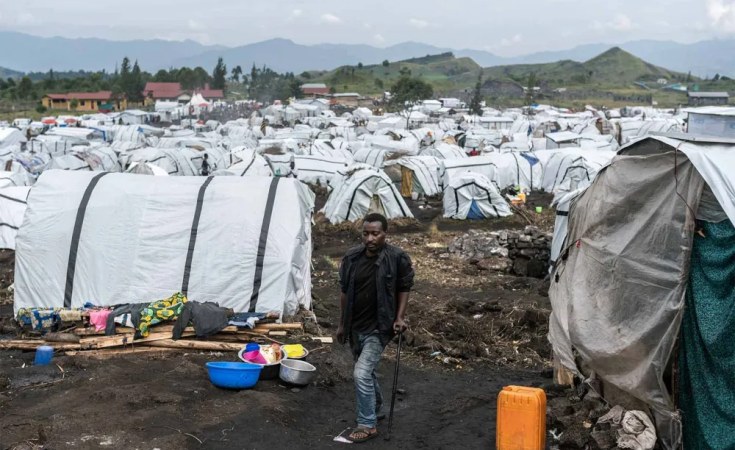There are twice as many internally displaced people today as there were ten years ago - the largest numbers ever recorded, said Special Advisor on Solutions to Internal Displacement Robert Piper, on Friday.
Mr. Piper said that the current global figure of 76 million represented those who have "lost their homes, livelihoods, their communities and in some cases, their legal identities, because of wars, disasters like earthquakes and floods, and other weather-related disasters."
Internally displaced people (IDPs), unlike refugees, have not crossed international borders. While some return home relatively quickly, tens of millions get trapped in long-term displacement of five to ten years or longer.
War and disaster
This protracted displacement is typically the result of conflicts and war. Meanwhile, millions more are displaced due to natural disasters as floods, storms, earthquakes, and wildfires ravage countries around the world.
The most recent figures gathered by the UN refugee agency (UNHCR) revealed that 68.3 million people remained internally displaced due to conflict and violence. An estimated 9.1 million people were displaced within Sudan, the largest internally displaced population ever reported.
This was followed by Syria (7.2 million), and the Democratic Republic of the Congo (6.7 million).
In war-torn Gaza, more than eight in 10 people have been displaced, amounting to 1.9 million civilians. Haiti has also experienced record levels of displacement, with 600,000 people forced to leave their homes, double from last year.
Meanwhile, civil strife in Myanmar has left the vast majority of the three million IDPs there without proper shelter, and without access to food and water, according to independent UN expert Paula Betancur.
Rights abuses drive displacement
Addressing the Human Rights Council in Geneva on Friday, Ms. Betancur also cited a lack of accountability for human rights abuses as a key driver of displacement, while calling for the Human Rights Council's Member States to acknowledge the "individual stories of loss, resilience and hope" behind the record numbers of displaced.
Long-term solutions needed
While the UN's humanitarian teams helped as many as 50 million IDPs last year, Mr. Piper has called for more to be done to create sustainable solutions.
The Secretary-General's Action Agenda on Internal Displacement aims to break this long-term displacement pattern and create durable solutions, to better prevent new displacement crises from emerging and to ensure those facing displacement receive effective protection and assistance.
The Agenda set out 31 concrete commitments, and 22 different UN agencies have signed up for it.
Mr. Piper also appealed to Member States to create an intergovernmental forum to address the issue in a more cross-sectional way, rather than relying too heavily on the work of the UN Refugee Agency (UNHCR) and the International Organization for Migration (IOM).


